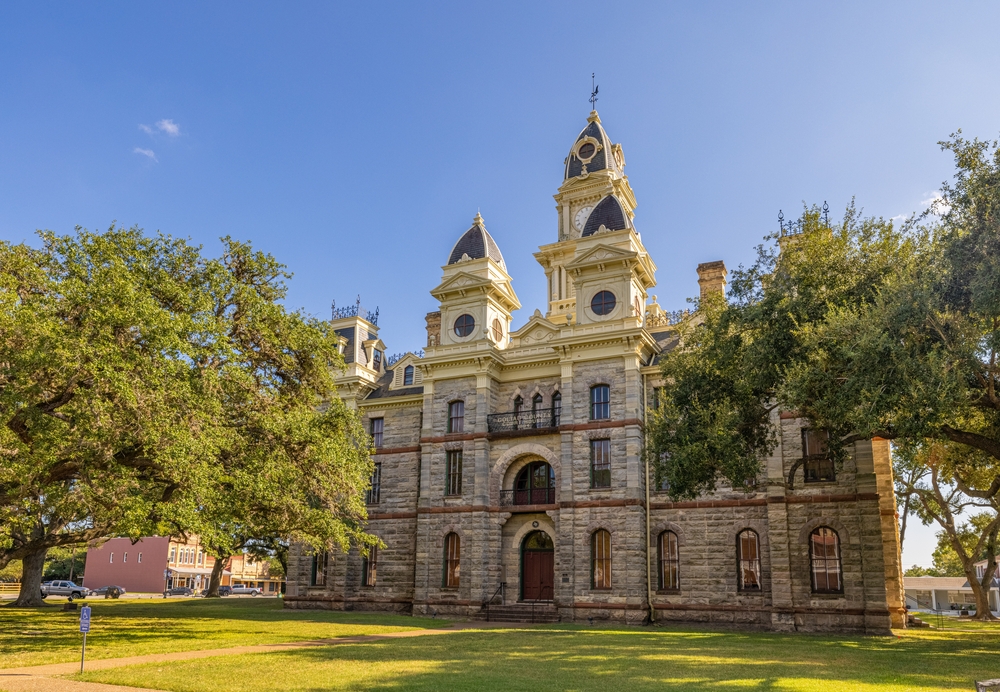Black holes are some of the most mysterious and awe-inspiring objects in the universe, with some growing to unimaginable sizes. These cosmic giants, particularly supermassive black holes, can contain millions to billions of times the mass of our Sun. Found at the centers of galaxies, they play a crucial role in shaping their surroundings. In this article, we’ll take a look at 12 of the largest known black holes, exploring their size, how they formed, and the remarkable features that make them so intriguing. From distant quasars to galaxies closer to home, these black holes stretch the limits of our understanding of space and time.
TON 618
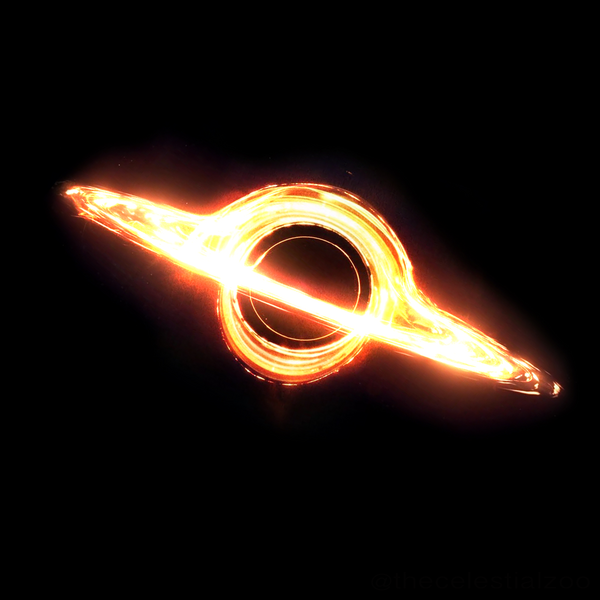
TON 618 is one of the largest supermassive black holes discovered to date, with a mass roughly 66 billion times that of our Sun. Located in a distant quasar, this black hole is in the process of consuming matter at an extraordinarily fast rate. Its event horizon, or the point beyond which nothing can escape, is vast, making TON 618 one of the most massive known objects in the universe. The surrounding accretion disk glows intensely, emitting energy that allows astronomers to detect its existence from billions of light-years away. If placed at the center of our solar system, TON 618 would extend well past the orbit of Jupiter. The sheer scale of its mass makes it an important subject of study for understanding how supermassive black holes grow and evolve. Despite its enormous size, TON 618 remains a fascinating mystery in astrophysical research.
S5 0014+81
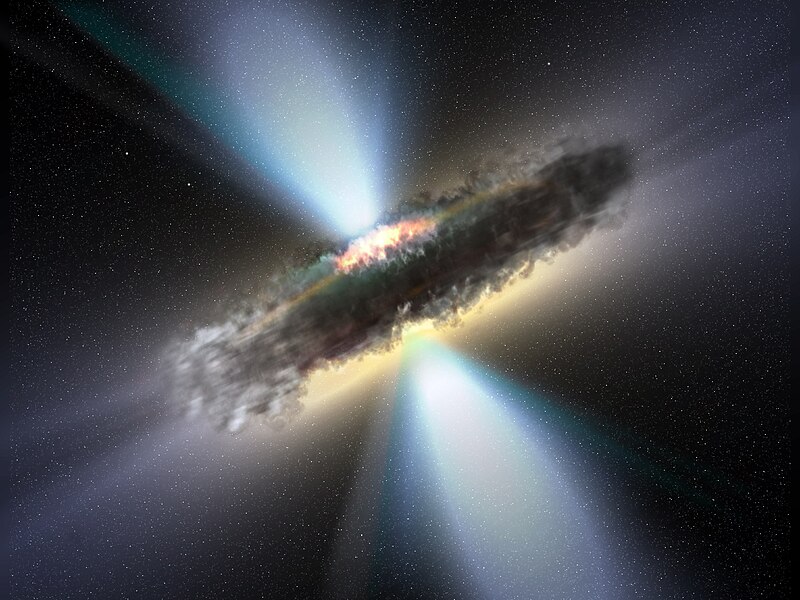
This black hole, located in the quasar S5 0014+81, is estimated to be about 40 billion times the mass of the Sun. Its immense size allows it to warp the surrounding space-time significantly. Discovered in 2003, it is one of the most massive black holes found in the early universe, with its light originating over 12 billion light-years away. S5 0014+81 is actively feeding, its accretion disk is incredibly bright, emitting X-rays that help scientists track its growth. Although it is difficult to directly observe the black hole, the emissions from the surrounding material offer valuable clues. The size of its event horizon suggests that it has been growing for a substantial amount of time. As one of the largest quasars known, S5 0014+81 challenges our understanding of black hole formation.
NGC 4889
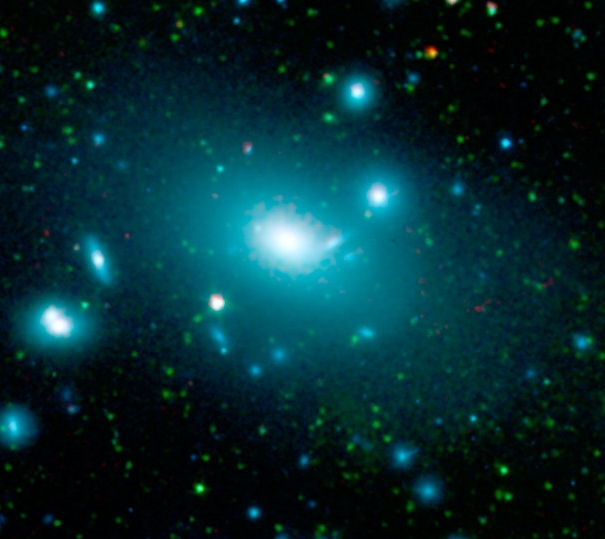
NGC 4889, the largest galaxy in the Coma Cluster, hosts a supermassive black hole with a mass of approximately 21 billion solar masses. It is located roughly 320 million light-years away from Earth, making it a fascinating subject for astronomers. The black hole resides at the center of an elliptical galaxy, where its gravitational influence dominates the galactic center. Despite being in a dense region of space, its immense size makes it stand out as one of the largest in the local universe. Its event horizon is so vast that it could theoretically swallow entire star systems. The discovery of NGC 4889’s black hole provided crucial insight into the relationship between galaxies and their central black holes. As the black hole continues to grow, it will likely become an even more powerful gravitational source.
M87
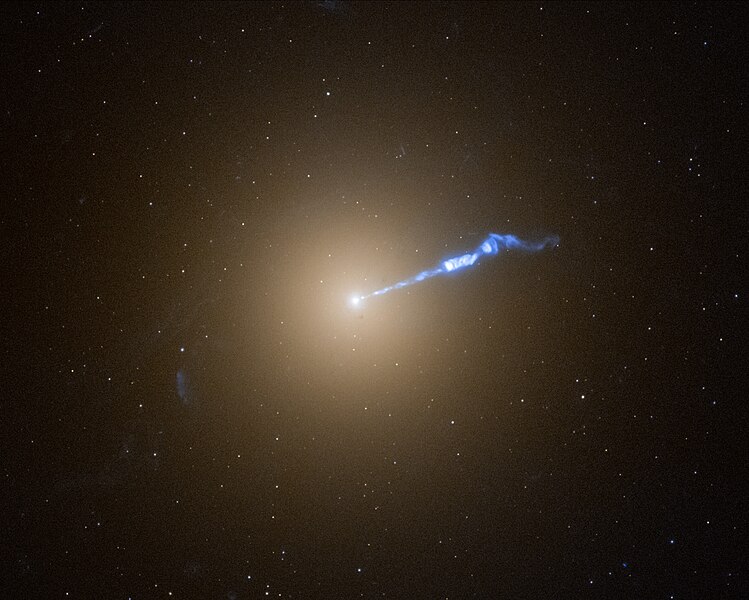
The supermassive black hole at the center of the galaxy M87 weighs in at about 6.5 billion solar masses. This black hole became famous as the first to be imaged by the Event Horizon Telescope (EHT) in 2019, revealing a glowing halo of gas surrounding the event horizon. M87 is located 53 million light-years away in the Virgo Cluster, making it one of the closest supermassive black holes to Earth. Its mass is large enough that it can affect the motions of stars within the galaxy and power massive jets of energy that stretch for millions of light-years. The EHT image of M8’s event horizon provided a direct observation of a black hole’s size and shape. Scientists continue to study this black hole to understand more about its accretion disk and the processes around the event horizon. M87 is a prime example of a black hole that both defines and challenges our current understanding of these cosmic giants.
Phoenix Cluster Black Hole
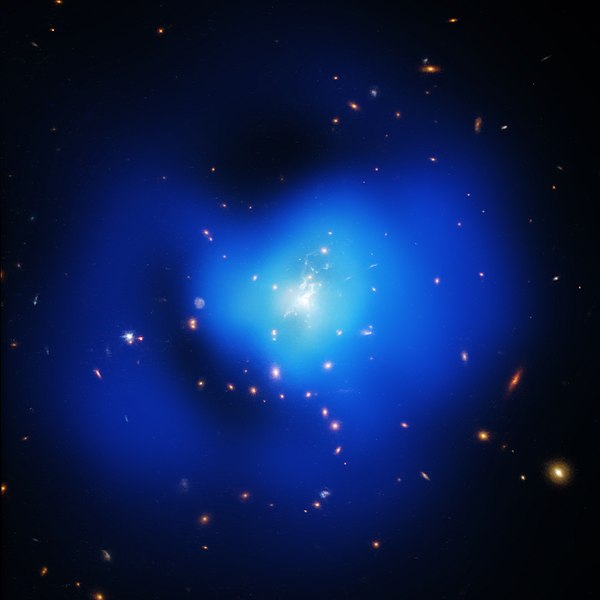
The supermassive black hole in the center of the Phoenix Cluster has a mass of around 20 billion solar masses. This enormous black hole lies 5.7 billion light-years away from Earth, within one of the most massive galaxy clusters known. Its size is so immense that it can influence the formation of galaxies in the surrounding cluster, acting as a cosmic regulator. The black hole is located in a region rich with hot gas and dark matter, which gives rise to complex dynamics. Though the black hole is difficult to observe directly, scientists can measure its mass by studying the movement of surrounding galaxies and gas clouds. Its gravitational pull is so powerful that it prevents star formation in the cluster’s core. Understanding the Phoenix Cluster’s black hole is key to learning how supermassive black holes impact their galactic environments.
IC 1101

IC 1101 is an extraordinary galaxy located approximately 1.04 billion light-years from Earth, hosting one of the most massive black holes known. This supermassive black hole has a mass of about 40 billion solar masses. The black hole resides at the center of a giant elliptical galaxy, which itself is considered one of the largest known galaxies in terms of physical size. The size of its event horizon suggests that this black hole has been growing for billions of years, drawing in vast amounts of surrounding gas and stars. Its location within a giant galaxy cluster provides it with ample material to continue feeding, allowing it to maintain its massive size. IC 1101’s black hole likely plays a key role in the cluster’s dynamics, potentially regulating star formation and galaxy evolution. With such a large mass, it is one of the most extreme examples of how black holes can influence their surroundings.
Abell 1201
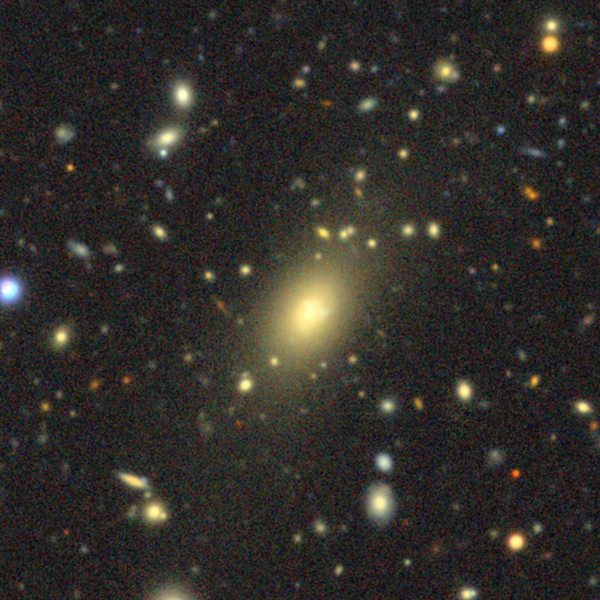
At the heart of the Abell 1201 galaxy cluster lies a supermassive black hole with a mass of around 33 billion solar masses. This black hole resides approximately 1 billion light-years from Earth, in a densely populated region of space filled with galaxies and hot gas. Despite its immense size, it has been difficult for astronomers to study directly due to the thick surrounding gas that obscures its view. However, the black hole’s gravitational influence on the motion of stars and galaxies in the cluster provides valuable information. The fact that Abell 1201’s black hole is so massive suggests that it has likely been accumulating matter for billions of years. It is theorized that the black hole plays a significant role in regulating the galactic dynamics within the cluster. Abell 1201 represents a case where large-scale cosmic structures are shaped by the power of supermassive black holes.
OJ 287

OJ 287 is a unique and exceptionally large black hole located at the center of a distant galaxy. Estimated to have a mass of around 18 billion solar masses, this black hole resides about 3.5 billion light-years away from Earth. What makes OJ 287 stand out is its periodic outbursts, thought to be caused by the accretion of matter from a companion black hole in orbit. These outbursts result in periodic increases in brightness, making it an important subject of study for understanding binary supermassive black holes. Despite its distance, the brightness of these outbursts allows astronomers to study the system in detail. The size of the black hole’s event horizon is colossal, capable of consuming stars and gas clouds that come too close. OJ 287 is an example of how gravitational interactions between black holes can lead to dynamic and observable phenomena.
3C 273
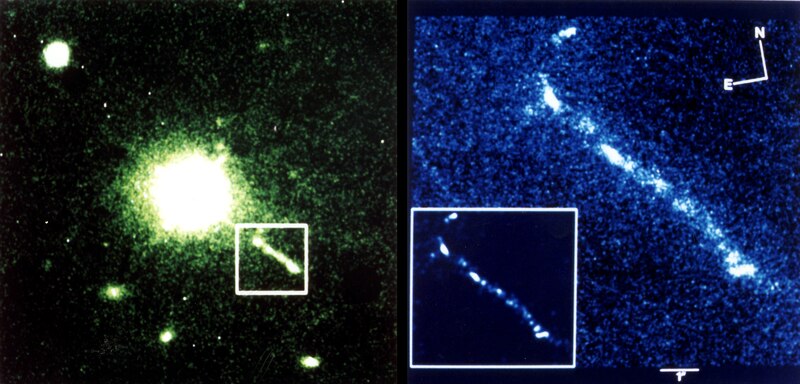
3C 273 is one of the brightest quasars in the sky, located about 2.4 billion light-years away in the constellation Virgo. The supermassive black hole at its center is approximately 2 billion times the mass of the Sun. This black hole is actively feeding on material from its accretion disk, producing intense radiation that can be observed across vast distances. The light from 3C 273 is so bright that it outshines the combined light of all the stars in the host galaxy. The quasar’s intense emissions are largely due to the immense energy released as material is pulled into the black hole. The size of 3C 273’s black hole means it can significantly influence the surrounding galaxy, shaping its evolution. Studying this object helps scientists understand how the most massive black holes impact their cosmic neighborhoods.
A2261-BCG
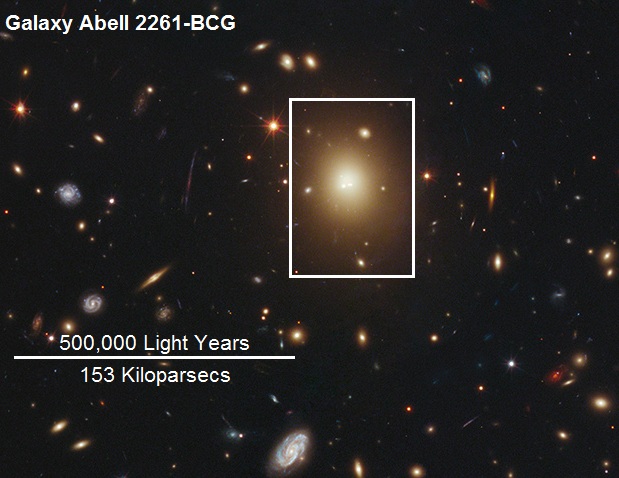
The black hole at the center of A2261-BCG is one of the most massive found in a galaxy cluster. It is estimated to have a mass of approximately 30 billion solar masses. Located about 2.7 billion light-years away, this supermassive black hole resides in a galaxy at the heart of the A2261 cluster. Its mass and the size of its event horizon suggest that it has been accumulating matter over billions of years. The gravitational pull exerted by A2261-BCG’s black hole affects the surrounding cluster, influencing the movement of galaxies and gas. Observations of this black hole provide clues about the role of supermassive black holes in galaxy and cluster formation. As one of the largest black holes discovered, it is key to understanding the dynamics of the most massive cosmic structures.
SDSS J0100+2802
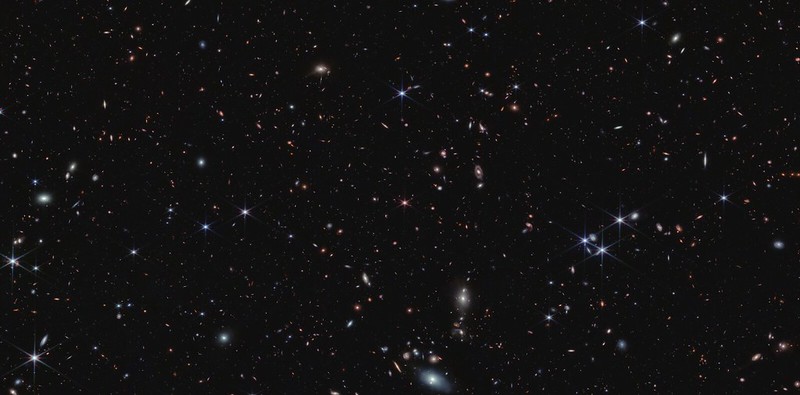
SDSS J0100+2802 is a quasar located about 12.8 billion light-years from Earth, hosting a black hole with a mass of roughly 12 billion solar masses. This makes it one of the most massive black holes discovered in the early universe. What sets SDSS J0100+2802 apart is that its black hole began growing rapidly when the universe was still quite young, only about 800 million years old. The discovery of this supermassive black hole challenges theories about how such enormous objects could form so early in cosmic history. Its accretion disk produces intense radiation that can be seen across vast distances, providing a unique opportunity to study the early stages of black hole formation. Researchers are particularly interested in how SDSS J0100+2802’s black hole managed to accumulate such a vast amount of mass in such a short period. The black hole’s existence offers clues about the processes that govern the formation of supermassive black holes in the early universe.
H1821+643
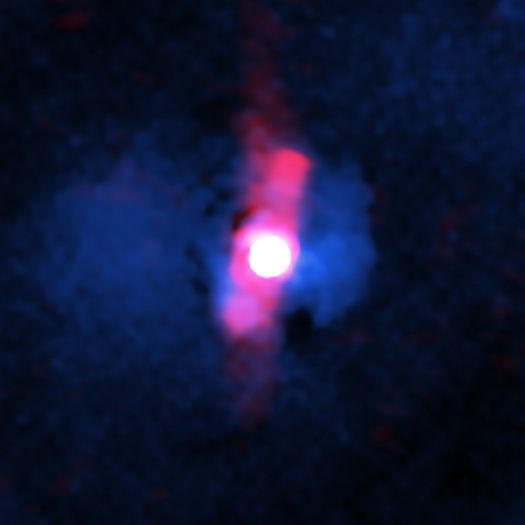
H1821+643, a distant quasar located approximately 2.5 billion light-years from Earth, is home to a black hole with a mass of around 30 billion solar masses. This black hole resides at the center of a massive galaxy and is one of the largest known black holes in the nearby universe. The quasar is highly luminous, with radiation emitted from its accretion disk visible across vast distances. H1821+643’s black hole is known for its remarkable energy output, powered by the rapid accretion of gas and dust. The discovery of this supermassive black hole offers important clues about how black holes grow and influence the galaxies they inhabit. The black hole’s immense gravity also distorts the surrounding space-time, making the quasar an excellent target for studying general relativity. H1821+643 remains one of the most significant objects for astronomers researching the life cycles of supermassive black holes.
This article originally appeared on Rarest.org.
More From Rarest.Org
Spain is home to some of the oldest and most charming hotels in the world, each with a story that blends history, culture, and timeless elegance. These historic establishments have hosted royalty, pilgrims, and travelers from across the globe, offering a unique glimpse into the country’s rich heritage. Read more.
Automotive history is filled with bold ideas and innovative designs that never made it to production. These experimental cars served as testbeds for groundbreaking technology, unique aesthetics, and engineering concepts that were often ahead of their time. Read more.
Texas is a state steeped in history, with many towns dating back centuries to the days of early explorers and settlers. These towns offer a fascinating glimpse into Texas’s past, showcasing a blend of cultural influences and historic landmarks that have stood the test of time. Read more.



